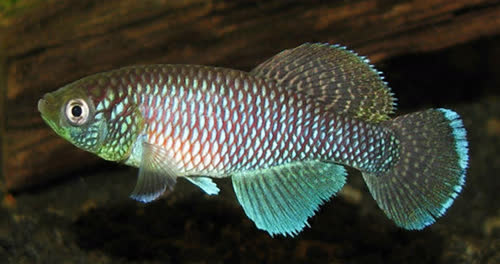|
|
"Some males were quite striking. There were several stocks/strains of N. jubbi around in those years and some controversy (as usual) about their relationships. Some coastal populations, notably those found along the Malindi - Garissa road in Kenya, included some males with red tails, and a red tailed aquarium strain was quickly developed from them. I suspect it is now defunct. To me, the blue color and underlying bronze sheen of this species (also seen in N. patrizii to some extent) are its most attractive features. For several reasons, the species needs to be collected more intensively, but much of its range is unsafe and likely to remain so." - Bruce Turner, 2020
"The blue form of N. jubbi has been collected from the Warfa locality (in Somalia) on two occasions - firstly by Richard Haas in 1979 and then again by Wildekamp and Ibrahim in 1983. I am not sure but I suspect that the "Warfa Blue" that was in the hobby was from the earlier collection. There are, basically, three phenotypes of N. jubbi - red, blue and intermediate. We have found all three co-existing in some habitats. N. jubbi interruptus was described as a distinct species, N. interruptus by Wildekamp and Berkenkamp in 1979. All Nothos are interesting and most are attractive; however, this one is at the bottom end of the scale in that regard." - Brian Watters, 2020
|








